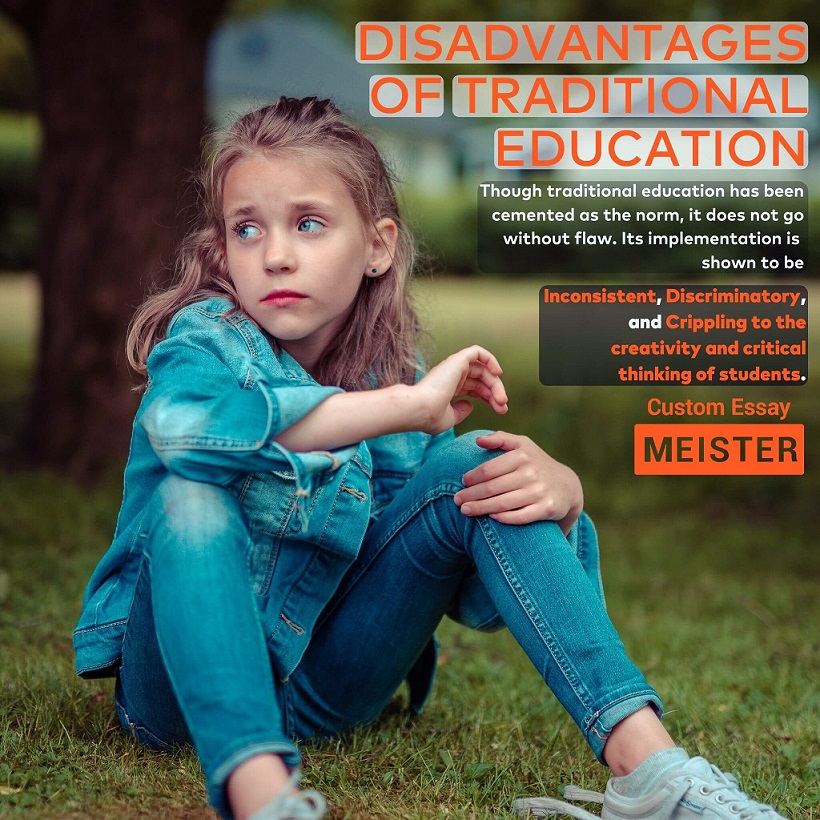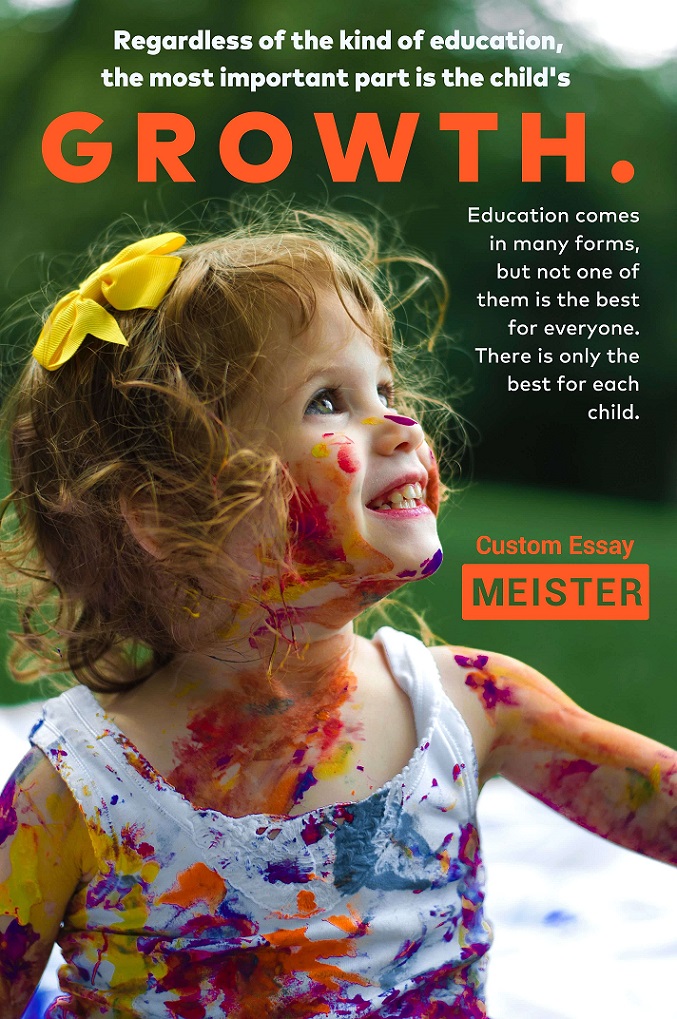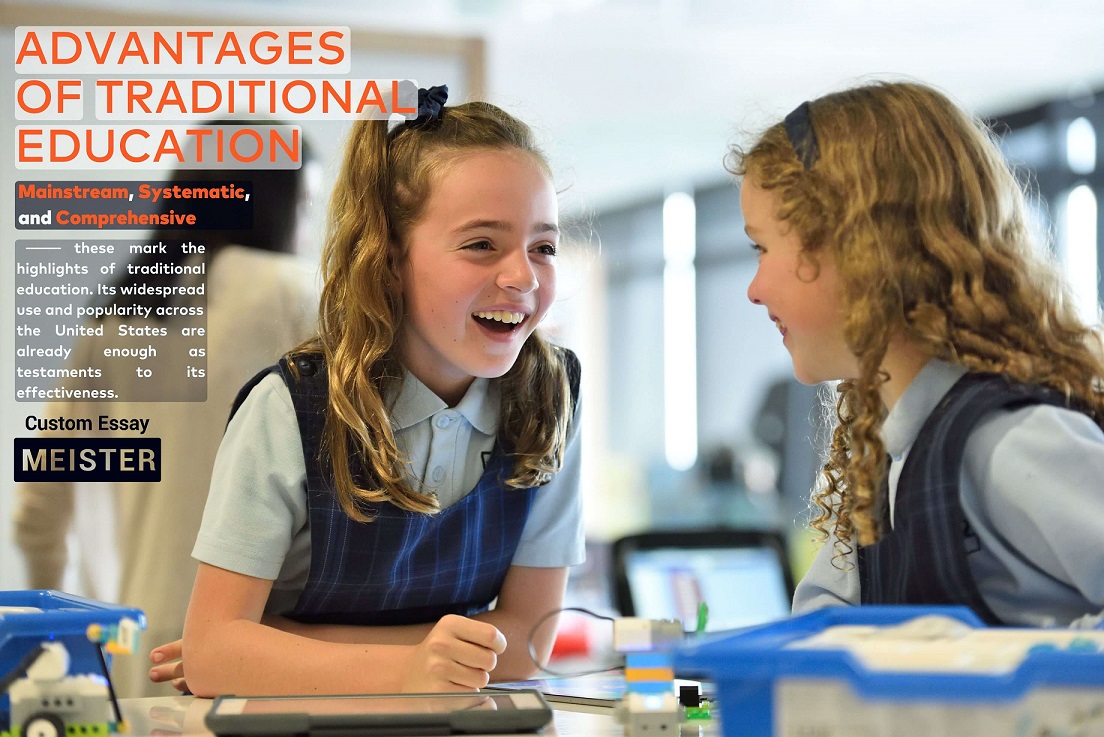15% discount on first order.
Special Welcome Offer.0
days00
hours00
minutes00
secondsPros and Cons of Traditional Education

It is seen everywhere: the school in the neighborhood, the typical school depicted in TV shows, movies, or perhaps in a book, schools seen in pictures and on the Internet. When the word “school” is mentioned, images of a large building come up, with a few double doors on the front, some large windows accompanied by smaller ones by the side and on the top, and maybe a basketball court or a playground on the side.
This image of school is so easy to imagine because it can be seen everywhere. It is the ubiquitous symbol of the traditional method of education that is utilized by almost every country around the world, where much of the discussion is led by the teacher, and the students have to comply with the requirements or orders of what to do in order to pass a certain set of criteria. Again, the image is formed: a middle-aged man clad in semi-formal clothing speaking to a large group of kids with a blackboard behind him.
This method of education has been widely accepted throughout the world, so it must be perfect , right? Not exactly. Just because a lot of people use it, does not mean it is flawless. To be sure, it does have its own merits that warranted its widespread use. Considering that, it is important to keep in mind the pros and cons of traditional education whenever a child is put through that method. Below is a concise list of the advantages and disadvantages of traditional education.
As the most popular method of education, traditional education has proven its efficacy over the years. Its main aspects are the reasons why many families opt for it to educate their children.
Advantages of traditional education
Mainstream
There is a reason why it is called “traditional education.” As the most widely practiced method of education in effect, it is the go-to for every parent whenever they think of where to send their children for education. In a 2015-2016 study conducted by the National Center for Education Studies, there were about 133,000 K-12 schools in the United States, 91,147 of which are public schools, making traditional education readily available to US families everywhere in the country.
To top that off, there are nearly 51 million students that studied in a K-12 public school as of 2019, connoting how traditional education has been proven to be not only an effective system but an efficient and accommodating one. Being highly accessible and free-of-charge—most of the time—describe the name of the game when it comes to traditional education.
Side note: K-12 is not completely equivalent to traditional education. The reason why K-12 is considered is because it is the current norm in the US , which counts as traditional education right now. In the US, free public education was conceived around the 18th century, while K-12 was formulated a century later. This implies that there had been other education systems in place before K-12 which served as traditional education methods.
Systematic
The word “traditional,” again, implies a system. K-12, and other education systems before it, demonstrates a very systematic framework in order to be conducive to the educational progress of students. K-12, for instance, has students start from kindergarten and proceeding through 12 grade levels after that. Grades 1-6 constitute elementary school, while Grades 7-10 are junior high school and Grade 11-12 are senior high school, followed by graduation and admission into a college or technical school.
In addition, a 2016 study showed that an average of 528 students are enrolled in each public school. With such a large number, traditional education needs to be encompassing, not only through an educational framework but also through a system of organization and discipline. Sets of regulations are implemented to make sure that students exercise proper behavior, and class schedules are put together along with a fixed recess and lunch break to maximize the student’s progression and time in school.
In this way also, traditional schools are perceived as the definitive way of shaping a student’s character. It shapes his mind into having to comply to a given framework and to become an upstanding individual in society and in his career.
Comprehensive
Every student aspires for a career for which he must specialize and excel in particular areas of study. In order to satisfy this need while being accommodating, traditional education seeks to be very general in its curriculum and does not place heavy emphasis on one field over another.
Because of this, it teaches various subjects that touch upon both the sciences and the arts. A student of traditional education would not find himself very lacking in some area of study as he graduates and transitions into college , as the entire decade that he studied for had him go through a lot of subjects with a balanced approach. Ideally, a student about to enter college should already be well-rounded, knowledge-wise.

Disadvantages of traditional education
Despite how systematic traditional education is, it can still fall into error. People desire to stick to a system, but they always come attached with their own predispositions that deviate from it. This shows very much in the glaring incidents that occur in traditional schools.
Inconsistent
Every traditional school follows the same curriculum, but not all traditional schools are the same. Location, culture, beliefs , and other factors distinguish a school from another. Elements from within the school, too, contribute to the uniqueness of a school, such as the teachers, the principal, the rules and regulations, the students themselves, and so on.
Some may see this as an advantage of traditional education, a testament to its fluidity and accommodation. Often, however, it serves more as a detriment. Among the factors that are compromised here is the quality of education. Some public schools may have terrible teachers, while others have rules so strict that they seem like prisons. This comes at the expense of the student and his learning, among the worst-case scenarios of which being the repercussions of the zero-tolerance policy on bullying.
As a result, parents must be more careful as to which public schools to send their children to—ironic, since traditional education is supposed to be accessible.
Discriminatory
Other times, it is not so much the system but the people themselves who are the problem. Traditional schools give awards to students excel in their studies. While this may be a motivating factor, it can also be grounds of discrimination. Excellent students are praised, while those who lag are not given much thought, when the ideal education system should ensure that there is no student left behind . Teachers give star students the limelight and uninterestedly tell those who lag to look up to them.
Traditional education should be accommodating in all respects. Those who handle it, however, end up discriminating against some students. One disadvantage of traditional education is the tendency of teachers to exhibit favoritism towards students. Though this is typically because of performance, it can also be from students “ sucking up” to teachers , lending them an unfair advantage over others who spilled blood and tears just to get a passing C.
Even worse is if the school is heavily influenced by the environment around it. What comes to mind is racism and sexism, beliefs of which proliferate and vary across states in America.
Crippled creative and critical thinking of students
It has been said previously that the quality of education is one of the compromised factors of traditional education. In part, this talks about not only about what students receive, but also what the students give.
Public schools that adhere vigorously to requirements may end up crippling the creative and critical thinking of students. Whereas performance and results are an effective indicator of a student’s progress, they may also end up diminishing anything else outside what is required.
Paolo Freire, a Brazilian philosopher of education, expressed his fear of public schools utilizing the “banking method” of education, where students are required only to store the information that their teachers give them, only to squeeze it all out when a quiz comes, without original output and often with failure. In the process, the students become “bankrupt” because they do not have anything valuable stored within themselves to give out anymore.
In a nutshell, traditional education only teaches students what to think, and not how to think. As a result, this shabby approach impedes the development of their ability to form original opinions and acquire a nuanced understanding of issues.
As a result, too, despite the wide variety of areas being taught, the sciences and other subjects considered “practical” are being emphasized over the arts. What is worse, is that students who are more interested in the arts are forced to take an interest in the sciences, should they not want to fail school.

A resolution on traditional education
There are many advantages and disadvantages of traditional education. Both must be heavily weighed in consideration of which school should parents send their children to, or of whether traditional education should be pursued at all. Homeschooling has proven to be more effective in many areas compared to traditional education, while other systems of education are on the rise to replace what is currently considered as traditional education.
Whatever the circumstances, however, the most important part is the student’s growth. Some may do well in homeschooling and falter in traditional school, while others flourish and excel in the latter. Traditional education, as it is, is far from perfect. But though it may always be flawed for a long time, long, too, has it been proven to be effective. For as long as the students grow, parents should feel relieved of their children’s education.
Writing service for students
Whether a student goes through traditional education or through any of its alternatives is only a part of what education is about: the growth of the student. At CustomEssayMeister, we believe that learning can come in any form. We accept the alternative methods of education, not only as themselves apart from each other but together, and imbue what we learn into our craft every day. That is why, undoubtedly, we are the go-to essay writing service for students across the world. Our writing experts always keep themselves up to date with the latest information, making all of the custom essays, custom research papers, and custom term papers not only formally made but also substantially formulated. Any request they receive, they fulfill with excellence in mind. Interested in having your own 100% original, custom-made paper? Enlist the aid of our writing experts now.
